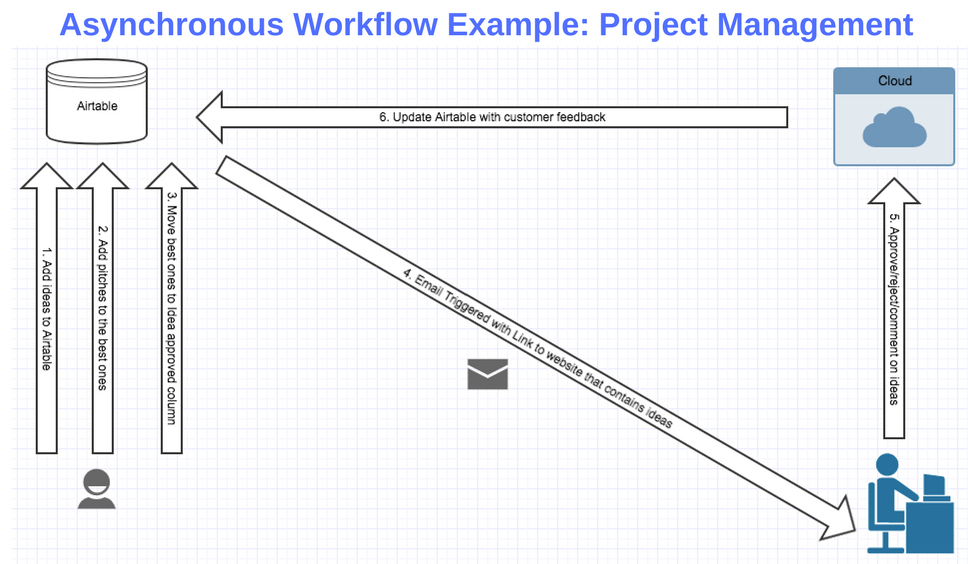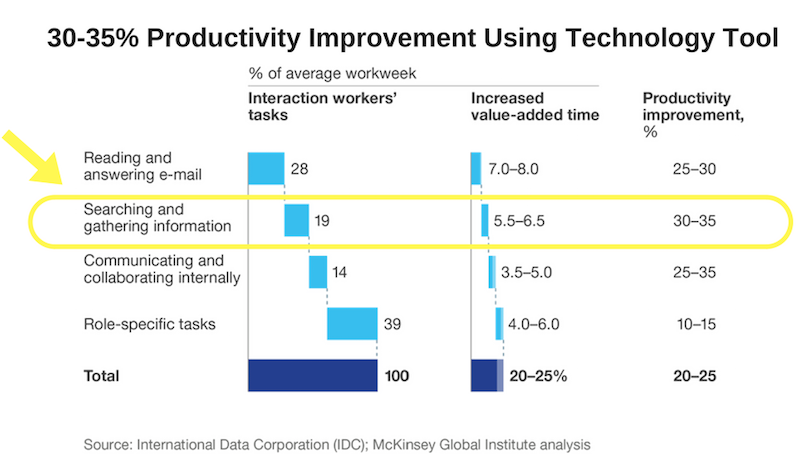Lebron James had a historic, MVP-level performance in the 2017 NBA Finals, but in the end, his team lost the championship.

At work, we sometimes get caught up analyzing individual performances when the metric that really matters is the overall team productivity. As the traditional silos quickly disappear, our day-to-day work has become a cross-functional, team sport.
Vince Lombardi, the famous NFL football coach, summed up what makes a successful team: “Individual commitment to a group effort – that is what makes a team work, a company work, a society work, a civilization work.”
Managing a group of diverse personalities and skill sets can be daunting, let alone trying to figure out how to set everyone up for combined success. Luckily, we’ve compiled several research studies with insights that your team can incorporate to help them jell and improve their productivity:
1. A Higher Purpose Builds Team Productivity and Engagement
The foundation of every great team is a clearly defined mission that unites, inspires and engages its members to work together.
A Gallup study found that an engaged team could boost productivity performance by as much as 200% over a similar corporation with disengaged employees.
Teams are more engaged when they are working together on something meaningful that will have an impact on the organization and their customers. But a strong mission is not enough to maintain performance for the long-term.
Day-to-day motivation is driven by setting incremental goals and achieving specific performance metrics along the way. When individuals understand their role and responsibilities in context to the team’s objective, members become accountable to each other, creating a dynamic that keeps everyone motivated.
How to Set a Plan that Inspires the Team
Establish a framework of Objectives and Key Results (OKRs) for both the team and the individual so each team member and the team as a whole are clear on what they need to do.
Create a shared plan for everyone to see that includes:
- Team Vision – An explanation of the shared mission and how it impacts the company, customer, and community.
- Objectives – Short-term goals that keep the team engaged.
- Key Results – Analytics which help the team measure progress and stay accountable to each other.
- Actions – The specific tasks each team member needs to complete.

[Source]
The image above illustrates how the team plan fits within the overall corporate strategy. While the organization’s vision is in the distance as the ultimate goal, teams need a specific vision that is within reach and the objectives that help them get there.
2. Respect and Empathy Raise the Collective IQ
After years of trying to create the perfect team, Google discovered that the key to good teamwork is being nice.
Research led by Google’s People Analytics Manager, Julia Rozovsky, found that individuals on teams that demonstrated high levels of empathy and respect were less likely to leave the company, more likely to share and accept diverse ideas, and were rated ‘effective’ twice as often by their managers.
Highly productive teams make an effort to understand and relate to each other, and they create a safe environment for everyone to share their voice without fear of humiliation or rejection. Knowing that your ideas will be heard, even if others disagree is a core characteristic of a well-performing team.

How to Facilitate Respect and Empathy Among The Team
In her TEDx talk, behavioral scientist Amy Edmondson offers three simple things individuals can do to foster team empathy and respect:
- Frame the work as a learning problem, not an execution problem. Make it explicit that there are no right answers, we learn from failure, and the team depends on every voice to contribute.
- Acknowledge your team’s fallibility. Encourage team members to take turns letting others know that it is safe to make mistakes and share opposing opinions.
- Model curiosity. Create a dynamic where asking questions is as important as ideas and solutions.
3. Asynchronous Collaboration Removes Constant Interruption
Interruptions at work kill productivity. A joint study from UC Irvine and Humboldt University in Germany found that a typical office worker gets only 11 minutes between each interruption, and it takes an average of 25 minutes to return to the original task.
Team members have different work styles and communication habits, which can hinder productivity if members are constantly interrupting each other’s workflow. By setting up an asynchronous collaboration system, everyone can work on the same project without waiting on or interrupting their peers.
An asynchronous workflow means that you can post what you’re working on in a collaboration tool and your peers can check in and access the necessary information according to their schedule. All the information is accessible at any given time, which should mitigate the extraneous interruptions that affect productivity.
How to Implement Asynchronous Workflows
The key to designing an asynchronous work environment is to choose the right technology tools based on your workflow needs and to create a standard process so everyone knows how and when to use the tools.
In the workflow below, one member submits work into Airtable, a project management system. An automated notification is sent to a co-worker, allowing them to contribute to the work on their own time.

Here are some examples of the different types of asynchronous collaboration tools:
- Daily Progress Tracking tools like I Done This enable the team to create weekly tasks they want to get done, and update their progress independently of each other and meetings.
- Task-management systems like Teamwork.com allow multiple people to work on the same project within the system, providing input in their own time.
- Project management systems like Airtable assign tasks to different team members and they take them through different stages of completion, all without calling a meeting.
4. Sharing Knowledge Across the Team Streamlines Work Output
Teams can no longer operate in knowledge silos. Time wasted trying to find the right info from the right people creates gaps that stifle productivity.
According to McKinsey & Company, the average worker wastes nearly 20% of their week looking for internal information or tracking down co-workers who can help with specific tasks.
Technology tools have solved this age-old issue by providing a central repository of information for the entire team, which can improve productivity by 35%. By documenting the team’s institutional knowledge and important details of each individual project, any employee can access whatever they need quickly.

[Source]
How to Start An Internal Wiki
A workplace wiki is a central place where your entire team can store internal documentation about processes, projects or their products. Here are three steps to jump start your internal Wiki:
- Pick the right tool. Knowledge-sharing tools like Tettra that integrate with your other collaborations technologies make it easy to organize, share and find information within your Wiki.
- Institute documentation guidelines. Standardize how and where documentation is implemented so it can be used by current and future team members. Tettra allows you to organize documents using Folders, where information is organized into custom categories.
- Documentation ownership. Maintaining up-to-date info within documentation is a vital part of keeping the flow of information accurate and useful. Assign owners who are responsible for certain areas of Wiki upkeep.
When information is shared effectively across the team, engineering knows what product wants to build and your customer service and sales teams will know how best to communicate that to the customer.
5. Team Chemistry and Satisfaction Improve Results
When team members know each other well, are happy and want to help the company win, productivity increases.
Researchers from the University of Warwick found happiness led to a 12% spike in productivity, while unhappy workers proved 10% less productive. And in a meta-analysis of over 225 academic studies, researchers found that happy employees experience 31% more productivity and 37% higher sales.

[Source]
The team’s happiness and fulfillment from work mostly comes from achieving their goals and being rewarded for their performance, but building team camaraderie and bonding also play a role in overall satisfaction.
That said, team-building exercises have developed a reputation for being a complete waste of time. The purpose of these exercises is often to force people to bond for the sake of bonding.
Genuine relationships are built organically. Instead, develop training activities that help improve the team’s skill set and let the bonding happen naturally.
How to Build a Happy, More Productive Team
The goal of team-building activities is to create unique opportunities for bonding within a framework designed for productive, professional development.
Here are three examples of activities that have the potential for learning and fun:
- Improv sessions can be designed to teach soft skills and build team chemistry. Participating in improv exercises and games helps team members leave their comfort zone to develop new skills while having fun together. This is a great way to improve team bonding.
- A volunteer project selected by the team strengthens unity, and it’s an opportunity to develop new skills as the team works together in a completely different environment.
- Creating your own activity turns the traditional team-building exercise on its head by asking the team to design and present a new team-building activity that they would actually enjoy.
Great Teams Boost Individual Performance and Satisfaction
Work is the new team sport. To solve today’s complex business challenges, you need the support and collaboration that only a team can provide.
A productive team that has a clear mission respects one another and communicates effectively will always be greater than the sum of its parts. Each individual will become a better employee as the team ethos pushes everyone to succeed.
